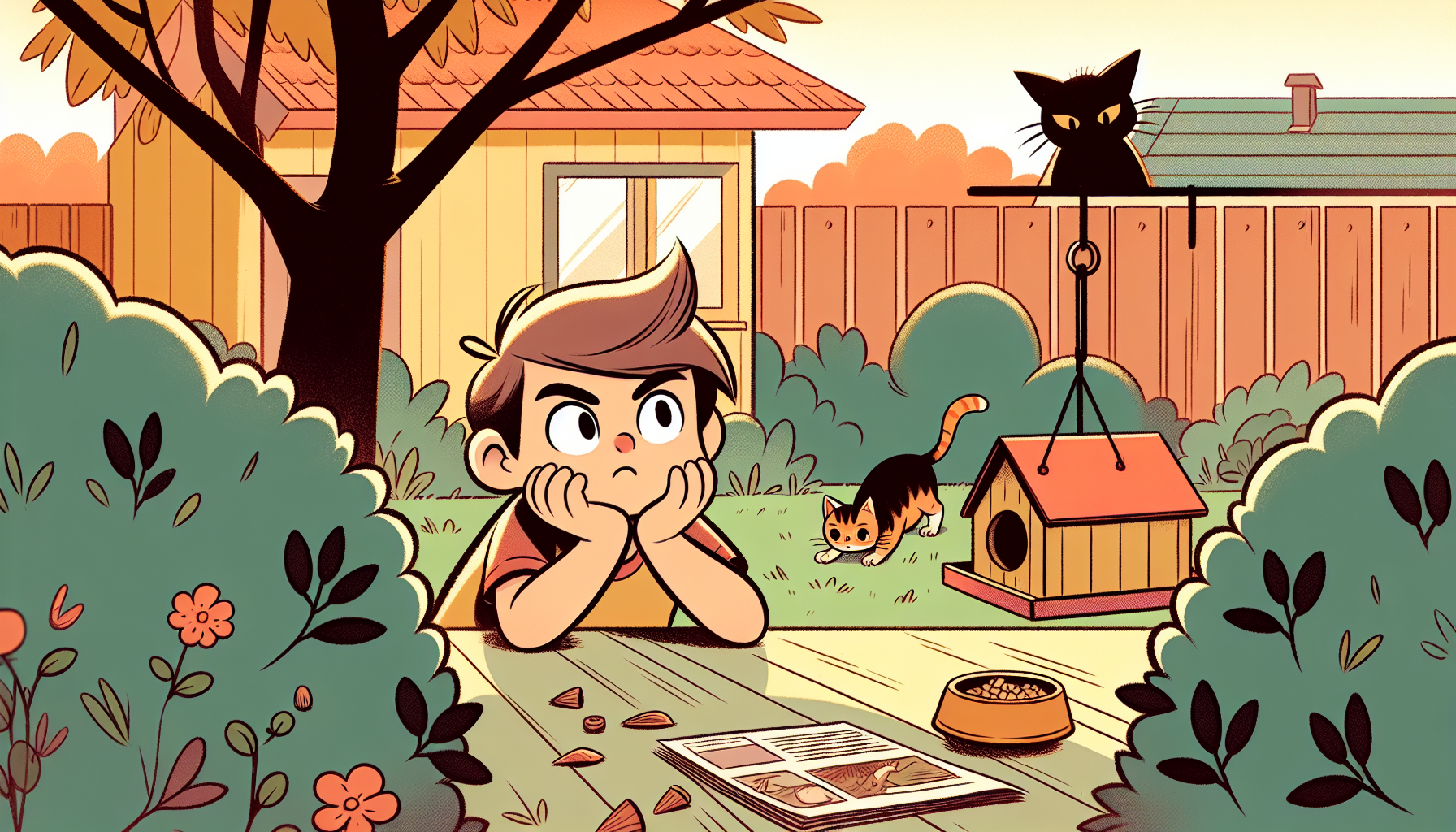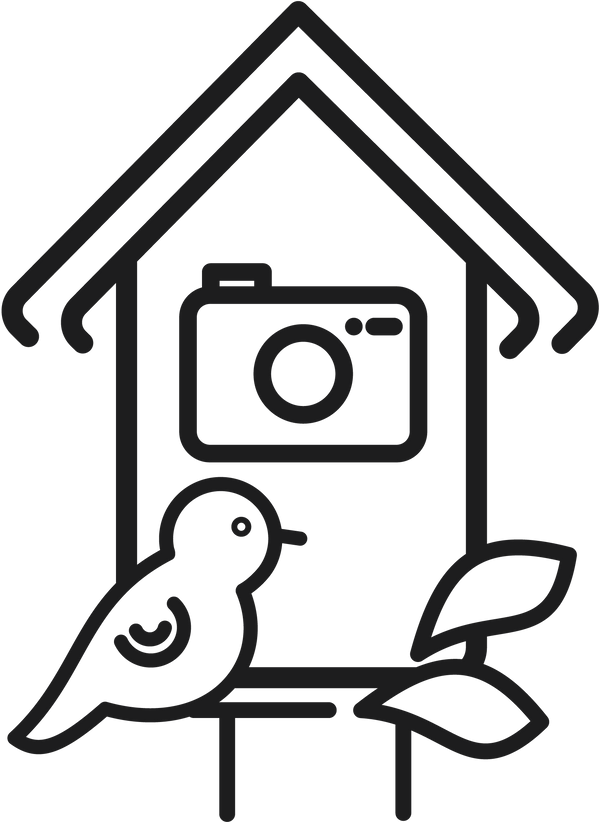
Protect birds in the garden: Recognizing dangers and securing habitats
Anyone who loves the cheerful chirping of birds and wants to protect them in the garden will soon ask themselves where the greatest dangers lurk and how habitats can be made safe. This guide brings together practical knowledge for families, hobby gardeners, technology fans and senior citizens: from natural enemies and seasonal behavior to legal rules and gentle observation techniques. You will learn how to run feeding stations hygienically, place nesting boxes cleverly, make access difficult for cats and set up cameras so that pictures can be taken without disturbing birds or breaking the law.
What natural enemies threaten birds in the garden?

Gardens provide food and cover, but they are not a safe place from predators and pathogens. If you want to protect birds in your garden, you should be aware of the most important risk factors and take targeted measures to mitigate them. The more diverse the planting and the better the structure, the easier it is for birds to find cover and escape routes.
Classic predators include domestic cats, martens, raccoons and some bird species such as magpies and sparrowhawks. Cats like to hunt at dusk and use hedges as cover, while martens and raccoons are skillful nest robbers at night. Birds of prey mainly strike at open feeding areas when birds have no visual protection or alternative routes.
Nest predators can be kept at bay by choosing the right place and creating small barriers. Nest boxes should be at least two meters high and with a clear approach in quiet, semi-shady places. Smooth access barriers on posts and trunk collars make it difficult for martens to get in, while thorny bushes form natural protective belts.
A second major risk is diseases that spread at feeding sites and water troughs. Trichomoniasis, which mainly affects greenfinches and is transmitted via contaminated food or water, is particularly well known. In warm weather, pathogens can remain infectious in water points for hours; hygiene is the key to safety.
Salmonella and parasites such as feather lice and mites also weaken young birds and can severely affect flocks locally. High concentrations of birds in a small area increase the infection pressure, which is why feeding areas should be cleaned regularly and temporarily closed if disease is suspected. If there are several sick or dead birds at summer feeders, it is advisable to take an immediate break from feeding and to remove drinking troughs.
These basic rules help to protect birds in the garden without sacrificing observation. Use silo feeders instead of open trays and rinse out drinkers daily with hot water. Further background information on trichomoniasis and immediate measures can be found at NABU, which provides regular advice on hygiene and feeding (NABU: Trichomoniasis in finches).
- Reduce predators: Place nest boxes high, in the shade and away from cats; smooth collars on posts.
- Prevent diseases: use feed dispensers, keep surfaces clean, replace drinking troughs daily.
- Secure escape routes: 2-3 meters of free space around feeding areas, dense hedges in the immediate vicinity as cover.
How do behavior and seasons influence the danger to garden birds?
Bird behavior changes with the breeding season, moulting, migration and winter, causing risks to fluctuate. If you are aware of these phases, you can protect birds in your garden and avoid disturbances. Planning and timing are often more important here than elaborate technology.
Breeding season: sensitive phase with special protection requirements
Between March and July, many species need low-disturbance nesting sites and safe havens. Frequent disturbances, intensive garden maintenance or free-roaming pets seriously jeopardize breeding success. Also pay attention to the legal requirements for hedge and shrub pruning during this period.
Provide nesting boxes early in late winter and offer different hole diameters for different species. Semi-shaded locations with free access are ideal, without direct climbing aids such as trellises or nearby branches. Pruning work on hedges should be carried out outside the legal period so that nests remain untouched.
During the breeding phase: observe yes, intervene no. Keep your distance, avoid prying eyes in the nest and guide visitors carefully through the garden. In this way, birds can be protected in the garden without driving the parent birds away.
Fall and winter: Feeding, hygiene and hunting pressure
In winter, high-quality food relieves many resident birds, but feeding also creates meeting points for predators. Position feeders where they are out of sight so that birds can recognize predators early and avoid them. Dense structural elements such as hedges help birds to escape, but should not be used directly as cover for cats.
Hygiene remains a must even in the cold season, especially during thaws. Clean dispensers weekly with hot water and change food in good time if it becomes damp. If there are signs of illness, stop feeding temporarily to break the chain of infection.
The legally relevant period is March 1 to September 30, when radical hedge trimming is prohibited. Careful pruning is permitted, but breeding birds have priority, which is why checks should be carried out before each cut. Details on the pruning bans can be found in §39 of the Federal Nature Conservation Act (BNatSchG §39).
Which technical aids support bird-friendly observation?
Technology makes observation exciting and provides insights if it is used in a bird-friendly way. The goal remains the same: To protect birds in the garden and document their behavior at the same time. The focus is on discreet cameras, an economical power supply and a stable, data-secure connection.
Cameras and recording: images without interference
Nest box cameras, wildlife cameras or compact IP cameras offer discreet views close to nests. Use infrared night vision without visible LEDs and deactivate auxiliary lights that are permanently lit at night. Motion detection reduces the amount of data and avoids continuous recordings that consume unnecessary power.
Choose models with good low-light quality, variable bit rate and local storage option on MicroSD so that there is no cloud obligation. An angled setup outside the box minimizes interference and enables species-specific images. Check the image section in advance so that nests are not overexposed in the focus.
Apps can be used to view clips and filter notifications, for example only for defined activity zones. High-quality mounts prevent vibrations in windy conditions and facilitate precise alignment. This keeps technology in the background and birds in the garden protected.
WLAN and power: reliable and weatherproof
In the garden, the power and data supply is the most common stumbling block. An outdoor WLAN repeater or an access point in the garden shed improves coverage; 2.4 GHz often reaches further than 5 GHz. Solar panels with a backup battery or replaceable power banks with weatherproof housings are suitable for locations away from the power supply.
Plan cable routes that are splash-proof and rodent-proof, for example in UV-stable conduits. Check the IP protection classes of cameras and plug connections, especially on exposed posts. Prioritize local storage and encrypted access so that private areas and neighbouring properties are not recorded unintentionally.
The location remains crucial: never point cameras directly at nests and do not illuminate clutches of eggs. A lateral perspective with a moderate zoom provides sufficient detail without influencing breeding behavior. This allows you to use modern technology and protect birds in the garden at the same time.
Legal requirements and practical protective measures at a glance
Species protection law and garden practice go hand in hand if you want to protect birds in your garden. The Federal Nature Conservation Act protects nests, breeding sites and resting places of European bird species all year round. Those who take action bear responsibility - both when carrying out maintenance work and when using cameras.
Legal basis: what is allowed and what is not
According to §44 BNatSchG, it is prohibited to significantly disturb European bird species or to damage or destroy their breeding and resting places. This applies regardless of the time of year and also includes used nesting boxes. If in doubt, contact the lower nature conservation authority for information on exceptions and conditions before taking action (BNatSchG §44).
For woodland maintenance, §39 BNatSchG regulates the period from March 1 to September 30, during which heavy pruning is prohibited. Gentle shaping and maintenance pruning is permitted, provided that no birds breed or habitats are affected. Hedges and bushes should be carefully inspected before any work is carried out.
The following applies to cameras: no surveillance of other people's areas, no lighting of nests, no permanent close-up observation of sensitive areas. Set up limited fields of vision and use privacy masks if the camera supports this. In this way, legal security and animal welfare remain in harmony.
Practical protective measures: effective and suitable for everyday use
Rely on structural diversity with native shrubs such as privet, dog rose, elderberry or blackberry. These plants provide food, cover and nesting opportunities and make access more difficult for predators. Make sure you use staggered heights to create areas of retreat.
Mount nesting boxes 2-3 meters high, protected from the weather and not in full sunlight. Use smooth sleeves on posts, spacers and overhangs as long as possible on entrance holes to protect against nest predators. Several boxes with different hole sizes increase species diversity and spread the risk.
Feeders should be designed as silo dispensers, with 2-3 meters free field of vision. Clean weekly with hot water and allow parts to dry completely; if disease is suspected, stop immediately. Chemical pesticides and artificial fertilizers should be avoided as they weaken the insect base of many bird species.
Pets can be integrated responsibly. If possible, keep cats indoors at dusk during the main breeding season and provide exit areas with cat-repellent mats or mesh panels. With routines like these, you can protect birds in the garden without having to do without animal roommates.
FAQ on protecting birds in the garden
How often should feeders be cleaned and with what? Clean silo feeders at least once a week with hot water and allow all parts to dry. If the feed is damp or you suspect illness, stop feeding immediately to prevent infection.
What to do if there are sick or dead birds at the feeding place? Remove feed and drinkers, clean thoroughly with hot water and take a break. Information on trichomoniasis and immediate measures can be found at NABU with practical recommendations (NABU: Trichomonads).
How do I hang up a nest box correctly? Choose a semi-shady, quiet place 2-3 meters above the ground with a clear approach and no direct climbing aids. Ideally, the opening should face east or south-east, protected from rain and midday sun.
Which camera disturbs birds the least? Use infrared models without visible LEDs, set motion detection and avoid continuous recording. Position the camera to the side outside the box and avoid using light in the nest area.
How do I keep cats away from the birdhouse? Create distance from dense cover, fit smooth collars to posts and offer alternative activities in the house or garden. If possible, keep cats indoors at dusk and dawn, especially during the breeding season.
By taking these steps, you are observing in a nature-friendly and responsible way. Start today, structure your garden step by step and experience more bird diversity - watch birds, protect birds in the garden!
